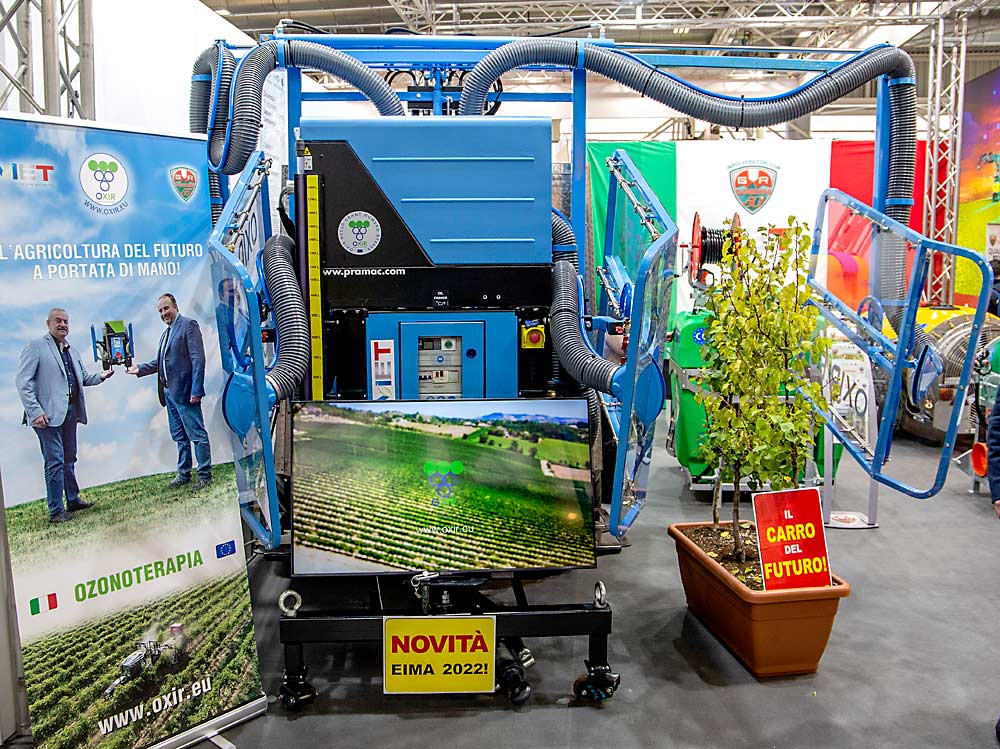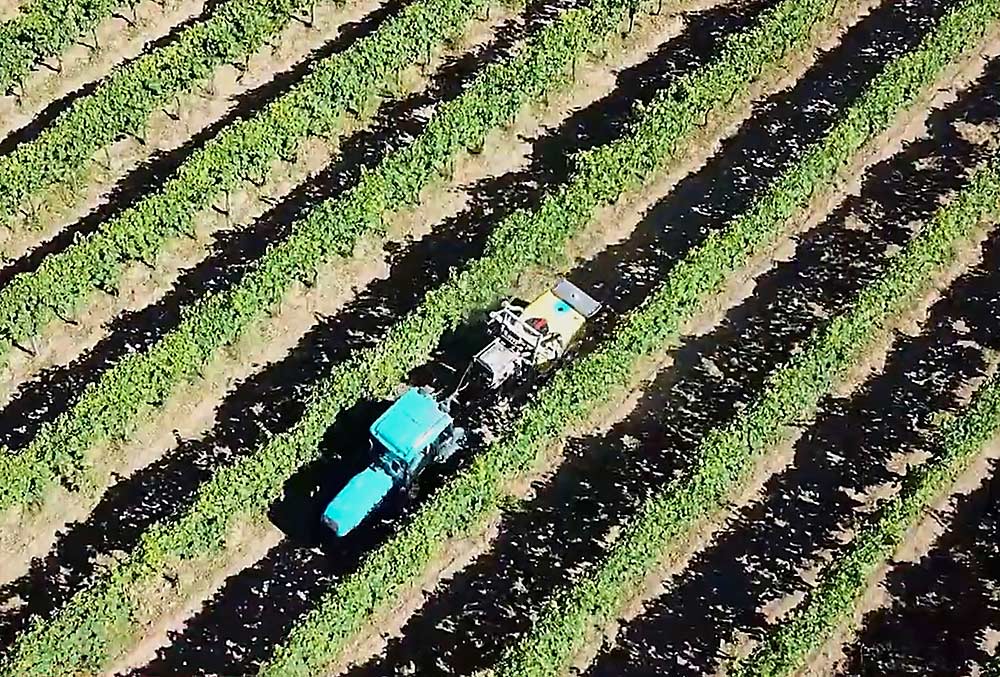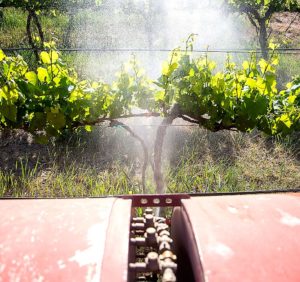
An Italian company is spraying ozonated water on vineyards, at a commercial scale, to control diseases without chemical residues and with brief re-entry intervals.
Data posted on the OXIR website show ozone treatments reduced the severity and incidence of downy mildew — by varying degrees: 11 percent to 65 percent at the extremes — compared to an untreated check in 14 vineyard trials over two years.
Researchers who have evaluated similar approaches without success in America are watching the project with interest and some skepticism.
“At least they’ve got data and they’re putting it out there,” said Matthew Grieshop, director of the Grimm Family Center for Organic Production and Research at California Polytechnic State University. Grieshop formerly worked as an entomologist at Michigan State University and has run laboratory and field trials with ozone generators.
In indoor settings such as food packing, preparation and controlled-atmosphere fruit storage, ozone technology offers control of fungal and bacterial pathogens with no chemical residues and re-entry intervals of mere minutes.
However, in independent trials, Grieshop and Lav Khot of Washington State University could not make ozone from a sprayer work against pathogens in vineyards or apple orchards. The substance always broke down into its more stable cousin, oxygen, by the time it reached the plant. Grieshop struggled to maintain 1 part per million in the tank, much less in the spray mist, and he published a paper warning off growers.
Leaders of the Italian project, OXIR, said they deliver between 3 and 4 parts per million at the point of vegetative contact, enough to diminish diseases without phytotoxicity.
“Encouraging development for sure,” said Khot, an agricultural engineer.
Italian experience
OXIR was created with a Horizon 2020 grant from the European Union research and innovation funding program by ozone company MET Srl and G.R. Gamberini, a farm equipment supplier, both based near Bologna. The partnership has about 50 service clients in Italy, including greenhouses and outdoor fields. Of the outdoor fields, eight are vineyards.
In the downy mildew trials, operators acheived the best results from following ozone treatments with Kocide, a copper-based fungicide and bactericide registered in the U.S. for organic use, said Francesca Ponti, a scientific support representative for OXIR.
The trials were conducted at 10 experimental sites in Italy, Spain, Morocco and in the U.S. in Oregon. Agri 2000 Net, a private research laboratory in Bologna, collected and tabulated the trial results, Ponti said.
For its commercial clients, OXIR achieves even better results with the addition of zeolites, aluminosilicate minerals used as a catalyst, Ponti said.

The trial figures look good, said Grieshop, but he is still skeptical of ozone’s value in outdoor settings. One of its big selling points — a lack of residue — is also a drawback, in his opinion. It will kill a pathogen only at the time of application. If inoculum is around, the disease will just reinfect the plant.
“It’s the same reason we do surgery in a sterilized room and not a barn,” he said.
OXIR knows this and tested ozone in a sunflower oil emulsion, aiming to extend treatment for eight to 10 days after application. That sometimes improved results over ozone alone, but not always.
Khot and Grieshop also would like to see laboratory trial results. For example, Khot’s team did not try mixing ozone with oil. “This aspect needs additional explorations on why, and the mode of action,” Khot said.
Lab work also would provide dose and response curves, Grieshop said. He envisions more value from ozone spraying in closed environments, such as inside a greenhouse. But potential is there, and OXIR’s data nudges the needle in the right direction, he said.
“I want it to work,” Grieshop said.
—by Ross Courtney







Leave A Comment